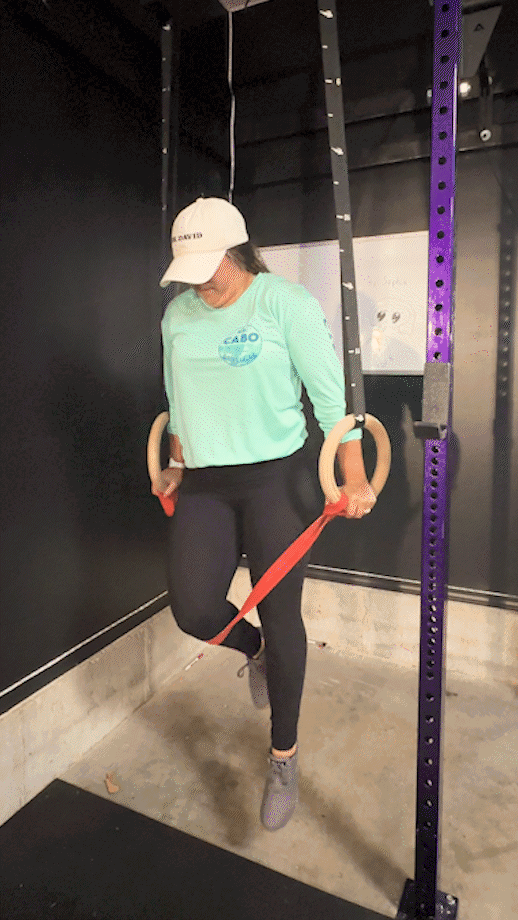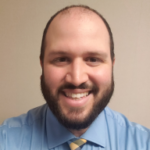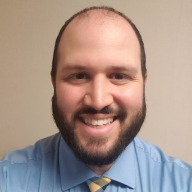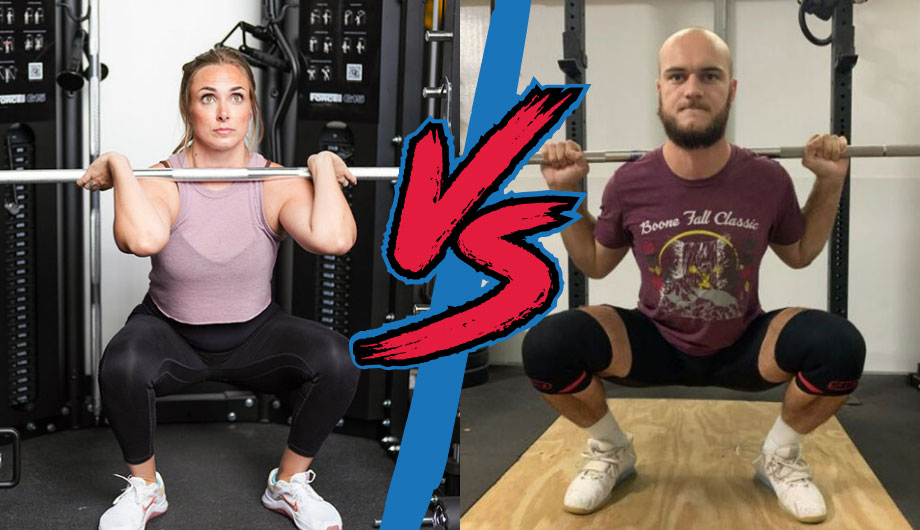Let’s talk about dips. No, we’re not talking about that stuff you pair with your crudité or corn chips. We’re talking about the classic bodyweight exercise that targets muscles in your shoulders, chest, back, and upper arms.
The dips exercise is very popular because it’s simple, convenient, and effective. All you need is a machine with a dip station, a set of parallel bars, or a sturdy surface, like a gym bench, and you’re good to go on one of the best triceps exercises available.
That said, you’ll want to make sure you’re performing it properly to avoid injury and maximize results. That’s why we’re talking today about how to do the triceps dips exercise, providing pointers on proper form, calling out common mistakes, and discussing a few variations to help you modify or progress.
So, in the immortal words of ‘90s hip-hop artist Freak Nasty, “When I dip, you dip, we dip.”
How To Do the Triceps Dips Exercise
(On Parallel Bars, Dip Bar or Rings)
- Step inside the bars or rings and grab the handles with a neutral grip.
- Jump to support, meaning your arms are locked out above the rings.
- It’s common to cross your ankles behind your body.
- With an upright torso, lower your body until your elbows form 90-degree angles.
- Push yourself back up to the starting position.
- Repeat as needed.

Trainer Tips for Form
The move sounds simple, but there are some things to keep in mind to get it picture-perfect. Here are our top dip tips, courtesy of GGR Head of Content and certified personal trainer (CPT) Kate Meier.
Ensure the Bars or Rings Are Properly Spaced
If bars or rings are too far apart from your body, you could risk injury. Parallel bars and dip bars are usually at a fixed width that is safe; rings, however, are often adjustable.
“Generally, rings should be just outside your body if you are standing between them,” Kate says. “If they are too close or too far apart, it could throw off your balance or, worse, increase your risk of injury.”
If something feels off about the movement, it probably is. Take the extra minute before beginning the set to ensure you’ve got the rings or bars spaced properly.
Ensure the Bars/Rings are at a Proper Height
Another important element of the set-up is ensuring the bars or rings are at the proper height.
Too short, and you won’t get a full range of motion; too tall, and getting into the starting position becomes an awkward ordeal.
“If you’re able to, adjust the rings or dip bar based on your own height,” Kate says. “The important things are that you don’t strain to get into the starting position, as you would if the tool is too high, and that you can dip all the way down without your knees touching the floor.”
RELATED: Dips vs Pull-ups
Common Triceps Dip Mistakes
So, you grab the handles, get in your reps, and call it a day. Easy peasy, right?
Not exactly. There are plenty of mistakes to look out for while performing dips. Let’s go over a few of the most common ones so you know what to look out for when it’s go time.
Flaring Elbows
One of the cardinal rules of the push-up is to keep the elbows in nice and tight.
That same rule applies to dips. Keeping the elbows close promotes proper movement mechanics, keeping the emphasis on the triceps, pecs, and anterior deltoids.
Flaring your elbows increases your risk of injury.
“Keeping your elbows close stabilizes the shoulder joint,” says Kate, “whereas letting them flare out puts stress on the rotator cuff and could lead to some nasty injuries like strains, impingements, or fractures.”
Jutting Out the Neck
Similar to other lifts and movements, you’ll also want to avoid jutting out your neck during bodyweight dips.
This is a common mistake, usually made when fatigue sets in and, just as you’re eking out those last few reps, you lose the neutral alignment of your neck and spine and accidentally contort yourself on your way to full elbow extension.
Keep your neck and spine neutral, torso upright, core braced, and eyes fixed dead ahead to maintain proper form throughout the full movement.
If you find your form failing, consider scaling the number of reps down or performing assisted dips using a dip machine to take the edge off.
Scapulae Collapsing
The triceps dip is a fantastic upper body exercise, but the emphasis should always be on — wait for it — the triceps.
Letting your shoulder blades collapse shifts that focus right off the upper arm, putting it on the neck, shoulders, and upper back and leading to possibly pain, discomfort, and injury.
The triceps are the primary muscle here, so let’s keep it that way.
Squeezing your shoulder blades together throughout the range of motion to ensure there’s no collapsing, no rounding, and no relaxing of the scapulae.
“Check in with yourself on each rep to make sure you’re not losing tension here as you fatigue,” says Kate.
RELATED: An Upper-Body Resistance Band Workout
Losing Tension in the Wrists
We always want to make sure we’re treating our joints with care during exercise.
For the triceps dip, it’s not only about the shoulder and elbow. It’s about the wrists, too. Excessively bending your wrists during the triceps dip exercise could place strain on the joint.
You want your shoulder, elbow, and wrist vertically stacked while in the starting position. Then, as you bend your elbows, maintain strong wrists to avoid bending and buckling at all costs.
If you’re having difficulty, try using wrist wraps for extra support or perform assisted dips until your wrists can handle your bodyweight.
Dips Exercise Variations
Dips are a great exercise for building impressive upper body strength, but some will find them too challenging. Likewise, some will find they’re not challenging enough.
Here are two variations of dips. One will help you take your training to the next level; the other will help you modify and work up to the standard bar dip.
Dips Exercise on Rings
According to a 2022 study published in the International Journal of Environmental Research and Public Health1, “the ring dip may be the best dip variation when targeting the [pectoralis major],” and researchers observed “the greatest peak activation” of various muscles, namely the triceps brachii, pectoralis major, latissimus dorsi, and biceps brachii, during the ring dip.
That’s no surprise; ring dips are no joke!
If you’re ready to give them a try, secure some gymnastics rings to a stable overhead structure, like a ceiling beam, pull-up bar, or thick tree branch, and go for it!
Just like regular dips, keep those elbows close and maintain strong wrists. It’s much easier for your form to fall apart in these key areas because rings move, requiring you to recruit stabilizing muscles to keep things steady.
Dips Exercise on a Bench
Bench dips are perfect if you are still working up to standard bodyweight dips, or if you simply don’t happen to have a set of P-bars handy.
Here’s how to perform the bench dip with proper form:
- Sit on the edge of a bench with your feet firmly on the floor.
- Place your hands on the bench, shoulder-width apart, with your fingers pointing forward.
- Lift your hips and butt off the bench and walk your feet forward.
- Bend your elbows to lower your body towards the floor. Stop when your elbows form 90-degree angles.
- Push yourself back up to the starting position.
- Repeat as needed
RELATED: The Best Weight Benches for Your Home Gym
The bench dip is easier than the bar dip, but it’s important to be careful nonetheless. In the aforementioned study, researchers noted that the participants “used beyond their observed self-moderated maximal shoulder extension, which may increase the risk of shoulder injury.”
Given this, use excellent form while doing bench dips, or try some other triceps exercises like pushdowns, dumbbell kickbacks, or triceps extensions while working up to the bar dip.
Useful Dips Exercise Accessories
For the most part, you can get in a set of dips anywhere you can prop yourself into the air and lower your body down. There are a few useful accessories, however, that might make your set of dips a little more luxe.
Dip Bars
You don’t need to buy an all-purpose exercise machine complete with a dedicated dip station to create the perfect place for dips in your home gym. All you need is a handy dandy set of parallel bars or dip bars.
Most parallel bars are low-profile, lightweight, and inexpensive, making them a no-brainer investment if you plan to do dips as part of your regular strength training regimen.
Gymnastics Rings
For the fitness elite and pro athletes in the audience, a set of gymnastics rings will take your dips to the next level, recruiting various stabilizing muscles and requiring even more upper body strength in order to keep the movement steady.
Even if you’re not ready for ring dips, rings are still a good investment for other exercises like ring rows, ring push-ups, and even bicep curl variations!
Assist Bands
Just like with pull-ups, some folks won’t be able to move their own bodyweight with good form, or even at all. A dip machine with assistance is one workaround, but really all you need is a hefty resistance band to assist the movement.
An assist band helps, you guessed it, assist the movement so you’re not responsible for bearing the full brunt of your bodyweight. Having one, or a set, available while scaling up to bodyweight dips is great. They’re also great for drop sets.
RELATED: The Best Pull-Up Assist Bands
Wrist Wraps
Maintaining a strong wrist during the dip exercise is paramount in preventing injury in this crucial joint. Performing wrist strengthening exercises, including other triceps exercises and forearm exercises, will help provide strength and stability, but it may not be enough.
Wrapping your wrists with a high-quality wrist wrap, therefore, is not a bad idea if you want to make sure you don’t bend or buckle during your set of dips.
FAQs: Dips Exercise
Are dips better than push-ups?
Dips and push-ups have a lot in common. They’re both pushing movements, target similar muscle groups, and mostly rely on your own bodyweight; so, which one provides more bang for your buck?
RELATED: What Muscles Do Push-Ups Work?
Ultimately, it depends on your personal goals. For maximum triceps gains, the dips exercise will provide more activation, since push-ups distribute your body’s weight between your hands and feet versus dips, which use only the arms.
Push-ups, on the other hand, provide activation in the chest muscles, shoulders, core, and lower back in addition to the triceps, which receive less activation compared to dips but activation nonetheless.
Our take— why play favorites?
You’ll get the best results incorporating both exercises into your chest and triceps workout routine.
How many dips should I do a day?
It all depends on your current fitness abilities and personal training goals. After all, an athlete might call 100 repetitions a warm-up, while the beginner will struggle to do just one.
Generally speaking, shooting to do three to five sets of approximately six to 12 reps works for most people, but make sure you’re choosing quality over quantity. It’s far more effective to do 10 perfect reps than 50 sloppy half-reps.
Do as many as you feel comfortable doing so long as you maintain perfect form and get a full range of motion on every single one, and consider consulting a fitness professional or personal trainer for personalized advice.
RELATED: How Many Reps To Build Muscle
Are dips a good way to build muscle?
Absolutely.
Dips alone will help build muscle mass, but supplementing your routine with similar exercises like the barbell bench press, for example, will help you get results even faster.
Combined with proper nutrition, progressive overload, and proper muscle recovery, you’ll have a hard-to-beat recipe for success.
References
1. McKenzie A, Crowley-McHattan Z, Meir R, Whitting J, Volschenk W. Bench, Bar, and Ring Dips: Do Kinematics and Muscle Activity Differ?. Int J Environ Res Public Health. 2022;19(20):13211. Published 2022 Oct 14. doi:10.3390/ijerph192013211







